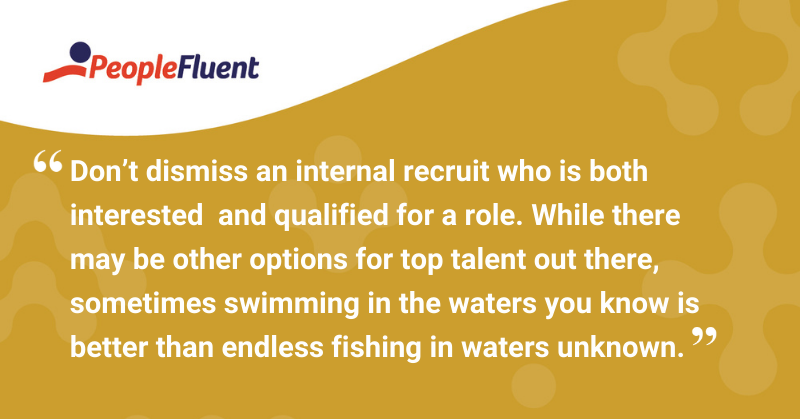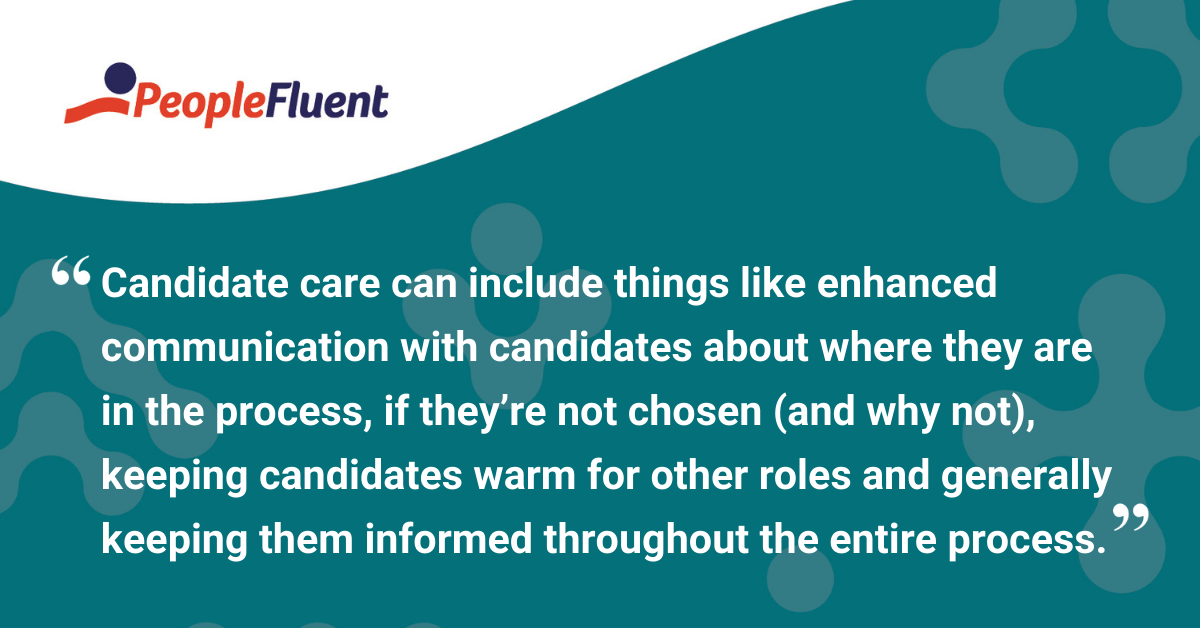Published: Feb 24, 2021Time to read: 10mins Category: Insights
5 Lessons ‘The Office’ Can Teach Us About What NOT to Do in Recruitment
As any good recruiter knows, first impressions are important; especially when you set the tone for a candidate's experience with your company. In today’s complex environment, a lot of organizations are fighting to stand out and be seen as the kind of employer people are falling over themselves to work for. How do you stand above the rest?
What better place to look for some tips and tricks on doing things differently than Michael Scott (played by Steve Carrell) in NBC’s Emmy-winning US sitcom ‘The Office’ (2005-2013). In this article, we explore how Michael and his colleagues at the show’s fictional Dunder Mifflin Paper Company overcame similar hiring hurdles every day.
When it comes to successfully hiring and onboarding fresh new talent, is truth stranger than fiction? Let’s find out!
Lesson 1: Develop Consistent Hiring Practices
What happens in the workplace: When recruiting, it’s vital to develop meaningful, consistent interview practices. According to Harvard Business Review: “Just winging it and asking whatever comes to mind is next to useless.”
How it played out on TV: A good example of how this impulsive, disorganized approach might play out, happened in Season 4, Episode 17: ‘Job Fair'. Michael, and his co-workers, Pam (Jenna Fischer), and Oscar (Oscar Nuñez) host a job fair at a local high school in hopes of hiring a summer intern to work at Dunder Mifflin. With little planning or care, Michael sets up a booth and leaves Pam and Oscar to manage. Despite Pam’s best efforts to recruit a recent graduate from her high school alma mater, Michael pulls rank and—literally speaking behind the potential recruit’s back—instructs Pam to get rid of him as he isn’t the type of person they want.
What we can learn: There are two obvious problems here. Firstly, not only does it hurt the company’s chances of finding a good candidate, it puts the company in a bad light. In real life, this dismissiveness could be viewed as discriminatory.
Secondly, when managers lack clear expectations and leave the heavy lifting to others, it can push existing employees out the door. Specifically, employees who might otherwise be your company’s biggest advocates, like Pam, the always-helpful receptionist who goes above and beyond to help colleagues or soothe Michael’s ego. At the episode’s end, Pam is seen visiting another company’s booth to explore a career in graphic design. The lesson? Don’t let the Pams in your organization walk out the door.

YOU MIGHT ALSO LIKE | ‘Increase Hiring Efficiency With These 4 Best Practices’
Lesson 2: Give Internal Candidates a Fair Chance
What happens in the workplace: One of the keys to finding hidden talent in your organization is to keep communication lines open and foster discussions that help guide internal candidates. When you can help employees realize their hidden potential, it creates a culture where people are free to tap into their interests and explore a higher purpose in the company. This is known as talent mobility.
How it played out on TV: In Season 9, Episode 13: 'Junior Salesman’, Dwight (Rainn Wilson), is tasked with filling an open role for a junior salesperson to replace his long-time coworker, Jim (John Krasinski). Though one of the existing employees, Clark (Clark Duke), expresses interest and shows he wants to take on the position, Dwight recruits several of his friends (and even a family member!) to come in for interviews.
To add insult to injury, Dwight eventually decides that none of the external recruits are a good fit for the position. Rather than communicating this to them directly, Dwight enlists Jim to break the bad news.
What we can learn: This has a few lessons for us. Not only is it about giving internal candidates more than a glance, it’s also important for hiring managers to collaborate with HR professionals in order to align their job descriptions properly. This ensures the right candidates, both externally and internally, are brought in for roles that best fit their expertise and experience.
A few noteworthy missteps:
- External candidates (friends of the recruiter) were brought in for interviews while a tenured employee, with experience and interest in the position, was overlooked.
- The candidates were asked different questions. This touches back on our first lesson around enlisting consistent hiring practices. Developing similar questions is advised.
- Dwight relied heavily on subjective elements when considering candidates and making a hiring decision.
Don’t dismiss an internal recruit who is both interested and qualified for a role. While there may be other options for top talent out there, sometimes swimming in the waters you know can be better than endless fishing in waters unknown.
There are many ways recruitment software—and enhanced communication between hiring and talent managers—can help overcome common challenges. For instance, talent pools needn’t exist only in your ATS. Allowing internal candidates to apply for your vacancies is best practice, and allows you to make the most of their existing knowledge of your organization. A great way to take advantage of this collective approach is by using talent mobility software to bolster your recruiting processes.
ALSO READ | ‘What Is Talent Mobility? Plus, What It’s Not!’
Lesson 3: Focus on Candidate Care
What happens in the workplace: Candidate care can encompass all interactions with a recruit and should begin at the first interaction. This includes things like:
- communication with candidates about where they are in the process
- giving feedback on why they weren’t chosen
- keeping candidates warm for other roles
- and generally keeping them informed throughout the entire process
This can be done in several ways but a strong recruitment tool that automates communications or tedious paperwork can definitely speed the process along. It also allows talent professionals to focus on more important things, like fostering strong relationships with candidates.
How it played out on TV: Let’s return to the ‘Job Fair’ episode. Michael realizes the candidate pool via the job fair booth is lackluster so he tries to sell the internship job to the one candidate he previously dismissed, to which the young man replies: “You didn’t want me before. You were kind of a jerk to me… and I’m gonna go now,” and walks off with Michael still trying to close the deal.
Meanwhile, Pam’s efforts to explore the graphic design position is in stark comparison to how a first impression can make or break a recruiter’s efforts. After asking for details on the role, Pam tells the hiring manager she doesn’t have the technical skills needed. The manager mentions there are classes she could take to learn more about the technical side of graphic design.
What we can learn: Not only did this conversation inspire Pam to try something new, it also ensured that her view of the company remained positive, keeping her warm for a future role. When thinking about helping internal candidates build on new skills that could position them for a future role, consider whether upskilling or reskilling is the best approach.
RELATED READING | 'Upskilling vs. Reskilling: Understanding the Differences and Their Role in Talent Mobility'

Lesson 4: Efficient Onboarding Is Important
What happens in the workplace: Without proper planning, it can be hard to keep your new employee(s) engaged during the onboarding process, especially when managed remotely. Don’t let all your hard work just walk out the door. According to a recent study, 20% of employee turnover happens in the first 45 days. Communication is key, as well as a clear plan of attack for delivering pertinent information.
How it played out on TV: After a different branch of Dunder Mifflin (located in Stamford, Connecticut) is closed down, Michael’s branch (located in Scranton, Pennsylvania) absorbs some of the Stamford staff. This takes place in Season 3, Episode 8: ‘The Merger’, where we find Michael instructing Pam to arrange the conference room in an attempt to impress the Stamford employees he’ll be onboarding later that day. With good intentions to ensure everyone feels welcome, Michael puts nameplates on each desk.
Unfortunately, Michael decides to take a freestyle approach, rather than enlist the help of his HR representative when onboarding the employees. Since the new staff members were already aware of the company’s policies and procedures, their expectations were less malleable than those of an external employee.
On day one, Michael loses a few of the Stamford employees, with others who follow days or weeks later. Ultimately, the company only retained three of the original members from the Stamford-Scranton merger—several citing Michael’s unprofessional or lazy approach to management as the reasons why.
What we can learn: Done right, proper onboarding can reduce a new employee’s time-to-productivity and improve long-term performance.
NEEDING SOME HELP WITH CREATING A CONSISTENT ONBOARDING PROGRAM? CHECK THIS OUT | ‘Onboarding Checklists: 6 Benefits for Talent Acquisition Leaders’
Lesson 5: Create Internal Collaboration and Communication
What happens in the workplace: Managing an entire recruitment process through just one person doesn’t give your candidates a real idea of your organization. By getting more people involved in the process, you can enhance internal collaboration and offer things like pre-recorded onboarding or training videos, introduce new staff members virtually, and even lean into a more structured interview process with multiple decision-makers joining at once. This saves time, resources, and sends an organized and positive message to candidates and employees alike.
How it played out on TV: An example of HR’s attempt to be involved in a transition process goes awry, but inevitably proves to be more insightful for Michael. It played out in Season 4 Episode 18/19: ‘Goodbye Toby’ where the bad vibes between Michael and HR professional, Toby (Paul Lieberstein) is on full display just as Toby’s preparing to leave Dunder Mifflin. In the scene, Michael’s reservations and apparent disdain at having to meet the new HR representative, Holly (Amy Ryan), are palpable—at first.
Given his long-held and misguided belief about HR being “monsters”, Michael is in complete shock that a human resources professional could be, well, human. He’s not alone, as research has found that 70% of tech employees working at top tech firms in the US reported they don’t trust their HR rep.
What we can learn: Holly’s humble and humorous approach to Michael’s mistrust is a great example of how gaps can be identified when communication is encouraged in the workplace, and individuals feel comfortable expressing themselves freely.
Michael’s view of the HR department was completely transformed after he had the opportunity to understand the function’s purpose from a different perspective. In real life, it’s possible for just one HR professional to make a huge impact by using empathy and a down-to-earth mindset to build trust.
HANDPICKED FOR YOU | ‘Talent Acquisition Triple Play: 3 Elements of a Successful Recruiting Strategy’
Want to know more about effective hiring practices?
PeopleFluent Recruitment can help! Check out these valuable resources.